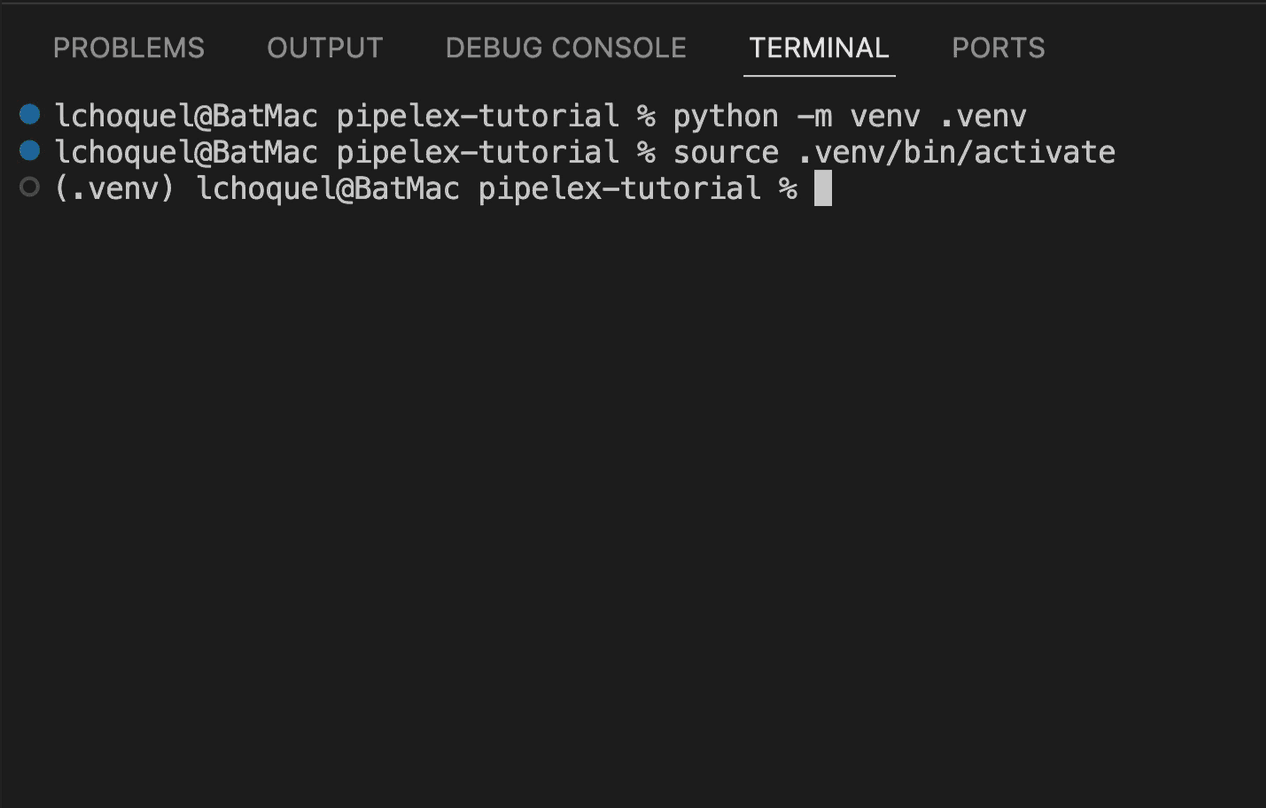AI Workflows
That Agents Build & Run
The open standard devtool for repeatable AI workflows.
Write business logic, not API calls.
.png)

Quick start
Loved by builders

It made building our agentic flow feel effortless "


The Pipelex Viewpoint
Agents are great at solving new problems, terrible at doing the same thing twice.
We argue that repeatable AI workflows should complement agents: written in a declarative language that both humans and agents can understand, reuse, and compose.
These workflows become tools that agents can build, invoke, and share to turn repeatable cognitive work into reliable infrastructure.
At scale, this forms a Know-How Graph: a network of reusable methods that become shared infrastructure.
Agent-First + Open Standard changes everything
Without Pipelex
❌ Manual glue code for every new workflow
❌ AI usage is technical, wrapping APIs
❌ Teams rebuild the same things
❌ Vendor Lock-in
With Pipelex
✅ Build workflows from natural language
✅ AI usage wrapping business logic
✅ Shared pipelines are your building blocks
✅ Open standard to run anywhere
Build Once, Run Anywhere
Combine all LLMs with our unified plugin system
Use anywhere: software, agents and automation platforms

They support us





FAQs
Find answers to your most pressing questions about knowledge pipelines and AI workflows.
AI workflows represent a new computing paradigm that demands a new approach. While natural language is great for human communication, it's too ambiguous for reliable automation. To collaborate with AI, we need a declarative language that captures domain expertise directly, preserving human intent while providing the required structure to orchestrate AI consistently. Think of it as the middle ground between vague English prompts and rigid code.
Those tools ask you to write code: they're dev tools for humans. Pipelex asks you to declare intent: it's a devtool for agents first. These frameworks lock you in. Pipelex gives you a portable language that non-tech people can write, any expert can read, and any platform can run. We're not competing on features: we're establishing the standard.
Those are visual, drag-and-drop platforms built for humans clicking through GUIs. Pipelex is text-based and built for agents to write workflows autonomously. No-code workflows live trapped in their platforms. Pipelex workflows are portable files you can version control, share, and run anywhere. They focus on app connectors. We focus on AI-powered information processing with structured outputs.
Pipelex is a declarative, domain-specific language (DSL) for AI workflows. It uses TOML syntax that reads like documentation, not code. Unlike traditional programming languages that express technical implementation, Pipelex operates at a conceptual level: you declare business intent like "extract buyer from invoice" rather than API calls. It's designed to be readable by domain experts, writable by agents, and executable anywhere.
Neither. Pipelex provides deterministic AI workflows that agents can use as tools. Our workflows generate structured outputs reliably, making them perfect for agent tool use. Agents access Pipelex workflows via MCP (Model Context Protocol) or our API. Think of us as a tool provider for agents: we give them reliable, repeatable methods for information processing tasks.
Pipelex is the right choice when you need repeatable, deterministic AI workflows for knowledge work. If you're processing invoices, analyzing contracts, or generating reports every week or a thousands of times a day, most of all you need consistent results every time, that's Pipelex. It's not for creative exploration or open-ended tasks, it's for when you've figured out the method and need to run it reliably at scale.
Yes. The core Pipelex language and Python runtime are fully open-source. You can find our repos at github.com/Pipelex/pipelex and our cookbook with examples at github.com/Pipelex/pipelex-cookbook. We follow an open-core model where enterprise features will require a commercial license, but the language itself will always remain open.
Yes, at three levels. First, pipelines are composable: they can call other pipelines as building blocks, so you can build on what others have created. Second, our codebase is modular with plugin systems for your own orchestrators, AI model APIs, cost reporters, and more. Third, it's open-source: fork it, extend it for your needs, and contribute back. The community shapes the standard.
Still have questions?
We're here to help!


